1. Introduction
Gainward CoolFX 6800 Ultra/2600 Golden Sample
Author: Jonathan Jacobs
 Water
has always been a life giving source. When scientists are searching for life
on foreign planets, the first sign they look for is water as an indication
that life may exist or may have existed.
Water
has always been a life giving source. When scientists are searching for life
on foreign planets, the first sign they look for is water as an indication
that life may exist or may have existed.
Now you may ask, what does this prologue
regarding water have to do with a VGA card review? Well, water gives the
graphics card that we are going to review, a
new lease on life. The GeForce CoolFX 6800 Ultra, incorporates a
water-cooling system.
It seems that water is one of the best solutions to help keep electronic
chipsets at low, operating temperatures. Furthermore, as can be seen
from the specifications
for Gainward's CoolFX 6800 Ultra card, the high clock speeds it operates
at is testimony of the raw power delivered by the card thanks to this fiendish
cooling system. But let's
dig deeper into this
microelectronic's wonder.
- Specifications
| GPU |
GeForce 6800 Ultra (NV40) |
| Memory Bus Width |
256 MB |
| Memory interface |
256 bit |
| Memory Type |
DDR3 |
| Core Clock |
450+ MHz * (enabled with Exper Tool) |
| Memory Clock |
1200+ MHZ (2x600) (enabled with Exper Tool) |
| Memory Bandwidth |
38.4+GB/s |
| Pixel Fill Rate |
6.4 Gpixels/sec |
| Geometry rate |
475 Mtriangles/sec |
| Bus |
8x/4x/2x AGP |
| Processing technology |
0.13µ |
| Output Connections |
2x DVI out, 1x S-Video out. |
| Cooling |
Innovatek Water cooling system |
| 2D Display Resolutions & Hz |
640x480@240, 800x600@240, 1024x768@200, 1152x864@170, 1280x1024@150, 1600x1200@100, 1920x1440@85, 2048x1536@85 |
| 3D Maximum resolution |
2048x1536 with 16.7M colors |
| Anisotropic Filtering modes (AF) |
2x/4x/8x/16x |
| Full Scene Anti-Aliasing (FSAA) modes |
2x/2xQ/4x/8xS |
| Dual Display |
Supported |
| Pipelines |
16 |
| Texture units per pixel pipeline |
1 |
| Technologies supported |
- NVIDIAŽ CineFX? 3.0 Technology
- NVIDIAŽ UltraShadow? II Technology
- Superscalar 16-pipe GPU Architecture
- 64-Bit Texture Filtering and Blending
|
| OpenGL support |
1.5 |
| Pixel Shader Support |
3.0 |
| Vertex Shader Support |
3.0 |
| DTV/HDTV decoding |
Supported
|
| System requirements |
The Gainward 3D processor board occupies one AGP slot Intel Pentium, Amd or Compatible CPUs and requires:
-
Minimum 64MB RAM
- CD-ROM Drive
- Minimum 480 Watts Power Supply
-
AGP compliant motherboard
-
Two unused hard disk power connectors are needed to operate this product
- Supports Windows XP, 2000
|
- The chipset

The front side with Innovatek's water-cooling heat-sink
exchanger
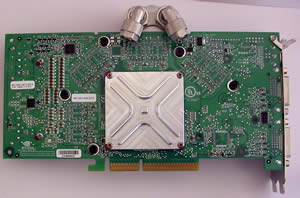
and the back side.

2 DVI outputs. The package also includes 2 DVI-CRT adaptors,
so don't worry if you have a plain CRT monitor.
- Package Contents


Included with the card are all the components you need to
get your water-cooling system up and running. 2 instruction booklets (in English
and German), mounting screws, plastic rivets, the 6800 manual, a driver/software
disk (61.21 + Expert tool) and the various s-video cables.

This radiator-fan does most of the essential work, since it is responsible
for cooling the water that flows through the system.

The pump is literally the heart of the system, cirulating the water
to all parts of the circuitry. And best of all ... it is completely
silent!

The tank which is attached to the pump must be filled with 1 part InnovaProtect
and 3 parts distilled water.

The InnovaProtect contains Ethandiol so try to avoid skin contact.
-Installation
When I first opened the box, to assemble the kit seemed like
a daunting task, with the large number of parts, tubes screws
and
other
stuff all sprawled before me. It's
quite
impressive, when you consider that all this tubing and gadgets assemble
into an efficient cooling system enabling the card to work at extreme clock
speeds. Yes, Gainward's CoolFX 6800 Ultra may at first glance, seem a bit
tricky to assemble and install but it
didn't take me more than an hour to get the entire system functional. To be
honest, is was a lot of fun too!
Regarding the installation process and more specifically
the included guide,
I was quite disappointed by the documentation which has very limited
instructions and lacked any real detail.
The only pictures shown had
to do with
the easier portions of the installation. For the rest, I had to use my "imagination".
The
whole principle of the cooling system is to create a closed circuit between
the radiator-fan,
the
pump
and the
heat-sink. But don't worry, you don't have to call the plumber to
assemble it. You simply cut the tubes into the appropriate lengths and
connect each of the
three
parts making up the circuit. In the end, it is as easy as it sounds.
After completing the water circuit, you then have to apply
the water "cocktail". I say cocktail because you have to fill the
tank with 3 parts distilled water (same as that used in car batteries)
and 1 part InnovaProtect Ethandiol liquid. After this, you need to test the
circuit to see if it
is functional. To do this, remove the main power supply cable that connects
to the mother board from the mother board connector, and then apply the included
connector to the
end
of the
cable (at this point the mother board is not connected).
This enables
the
power supply
to
work
without powering up the motherboard. It will be necessary to refill the tank
a feww times with more "cocktail" as the liquid mixture begins to circulate
through the tubing. If everything is ok, then remove the connector and plug
the power
back to your motherboard. That's
it.
When you read this, it may sound confusing, but
if you have all the parts in front of you, it is much easier to conceive the
procedure.
One last thing you must do is to attach the pump and the
fan to the computer case with the screws found in the package. This will
make the whole system silent, and believe me, if you do it correctly, you
will not
experience even the slightest noise.
2. Test specifications
Test specifications
- Test PC
- Processor Retail Intel Pentium 4 2.4C*
- CPU Cooler Zalman 7000Cu
- Case Antec 1080AMG
- Motherboard: ASUS P4C800-E Deluxe (firmware 1014)
- Memory: 2x256MB OCZ
PC-4200EL Memory
- Hard Disk Drive: WD800JD 80GB 7200RPM
- CD-RW: LiteOn LTR-52246S
- PowerSupply: Levicom 500Watt
- Microsoft WindowsXP Pro Service Pack1
- DirectX v9.0b
*Latest generation VGA chipsets (6800, X800) need a CPU of more than 3GHz CPU in order to get the best of it.
- Benchmarking Software
- 3DMark03 Build 340
- Codecreatures Benchmark Pro v1.0
- AquaMark3 v3.0
- GLExcess v1.2
- Farcry v1.2 Built 1325
- Painkiller v1.3.1
- Unreal Tournament 2004 v3186
- Unreal Tournament 2003 v2225
- Tomb Raider: Angel of Darkness v49
- Halo 1.04
- Hitman: Contracts v1.74
- X2: The Threat Benchmark
- ExperTool for overclocking
- Drivers used
- Detonator 61.77
- DirectX 9.0c
3. 3DMark 2003
3DMark 2003 Build 340
 3D
Mark is a widely used and accepted benchmark that stress tests the DirectX
performance of a VGA card. For testing the performance of each card we use
the 4 benchmark games include in 3DMark. The first is a DirectX 7 game,
the second and the third use DirectX 8, and the last one tests graphics
under
DirectX
9.
3D
Mark is a widely used and accepted benchmark that stress tests the DirectX
performance of a VGA card. For testing the performance of each card we use
the 4 benchmark games include in 3DMark. The first is a DirectX 7 game,
the second and the third use DirectX 8, and the last one tests graphics
under
DirectX
9.
3Dmark03 also includes
sound and CPU tests, as well as some other feature tests. On this page
we offer the average FPS (frames per second) for the
benchmark games, comparing Gainward's CoolFX 6800 Ultra against the Aopen
Aeolus 5900 XT, Exair R9800XT and Sapphire R9800 Pro Ultimate.
- Game Test 1 - Wings of Fury (DX7)
 This
test is a combat flight simulator written for older hardware (DirectX 7).
Particles are used a lot in this test - smoke and vapor trails,
flak and gunfire, and explosions are produced using point sprites and quads.
This
test is a combat flight simulator written for older hardware (DirectX 7).
Particles are used a lot in this test - smoke and vapor trails,
flak and gunfire, and explosions are produced using point sprites and quads.
There are plenty of planes but their polygon frame rate is
low, as well as single textured background objects. Hence, the average
FPS
is high for all cards.

A higher FPS was expected for the 6800 Ultra, but considering that
the latest games use DX9, this is not a big issue.
- Game
Test 2 - Battle of Proxycon (DX8)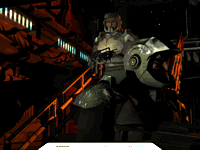
This test is a simulation of first person shooter game types.
1.1 and 1.4 Vertex
shaders are widely used since all character models are
skinned using vertex shaders.
This makes this test a good vertex shader comparison for VGA cards.
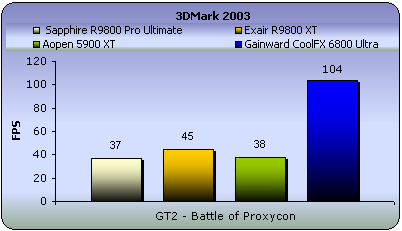
Pretty amazing results from the 6800. It is also worth noting
that most cards fail to perform smoothly in this test, but Gainward's 6800
Ultra performed with awesome power. This also shows its great capabilities
when processing shaders.
- Game Test 3 - Trolls' Lair (DX8)
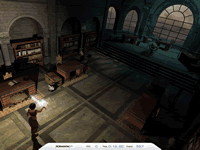 This
test should be the favorite of all RPG lovers. It is a cut scene of a female
warrior facing two malicious trolls. Again, the same
vertex and pixel processing is used as in game test 2.
This
test should be the favorite of all RPG lovers. It is a cut scene of a female
warrior facing two malicious trolls. Again, the same
vertex and pixel processing is used as in game test 2.
This test also uses
post-processing effects, such as Depth
of Field and Bloom effects
which are widely used in today's game cut scene sequences.
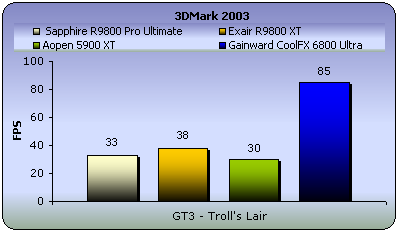
Same story here with a difference of 47 FPS from the next best, the Radeon
9800 XT.
- Game Test 4 - Mother Nature (DX9)
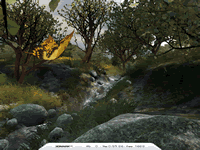
This
game test represents the level of effects and realism that are possible using
2.0 vertex and pixel shaders, plus some other features that DirectX 9 offers.
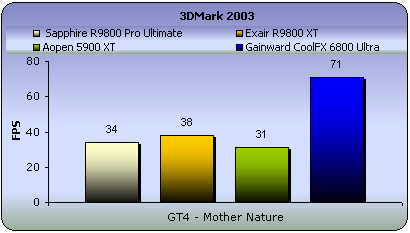
Here again the 6800 is way on top.
- 3DMark Official score
If you test your machine with 3DMark you can post the results
at 3DMark' online results page. For more information visit futuremark.com.

No comment required.
4. Aquamark 3
Aquamark3
 Since
the majority of today's applications and games are compatible with DirectX
9, the need for benchmark applications that thoroughly test DX 9 has become
paramount. Aquamark3 is just such a benchmark and uses the 3D engine (Krass
engine) from the Aquanox game.
Since
the majority of today's applications and games are compatible with DirectX
9, the need for benchmark applications that thoroughly test DX 9 has become
paramount. Aquamark3 is just such a benchmark and uses the 3D engine (Krass
engine) from the Aquanox game.
Unlike synthetic benchmarks, Aquamark3 allows benchmarking
in a real-world
scenario with an engine and art assets representing the complexity of current
state-of-the-art games. The results you get from Aquamark vary from a general
result score (AquaMark Triscore),
which
is a
result of
9 chapters
where each one utilizes different graphical operations. The AquaMark3 benchmark
also delivers scores for specific hardware components as well as an overall
score for the entire system.
The chapters that stress Graphics performance are the
following:

In this section we present comparison charts for the following
chapters: High particle count, Vertex and pixel
lightning and Massive
Overdraw
- High particle count
 This chapter demonstrates a high number
of particles being used for simulating dust and smoke. Each particle is
approximated by a mass point with one degree of freedom for its rotation.
This chapter demonstrates a high number
of particles being used for simulating dust and smoke. Each particle is
approximated by a mass point with one degree of freedom for its rotation.
The
particle system of this test is designed to render a large number of physically,
accurately simulated particles, as efficiently as possible.
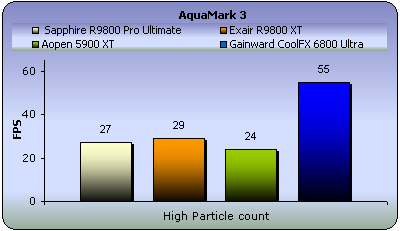
No problem at all for Gainward's CoolFX 6800 to render many particles.
- Vertex and pixel lightning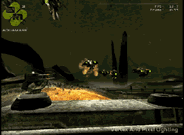
The
objects in this scene show a broad range of different material and lightning
effects
used in modern game engines.
Aquamark3 tests two things: It applies many vertex and pixel shader changes
straining the graphics hardware and its many texture lookups (determining the
lighting contribution and material reflectivity) also strain the Multitexturing
and rasterization components.
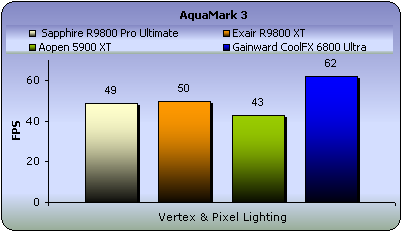
Here it finds it hard to process lightning effects, noting
that Radeon 9800 XT is behind by only a small difference of 12
FPS.
- Massive Overdraw
This
scene demonstrates the application of the particle system for large explosions.
The test stresses
the graphics hardware by the high overdraw of textured areas as many particles
overlap each other. A huge explosion that is included on this chapter, pushes
the VGA card to the limits. It's really awesome if you imagine the number
of pixels and shaders needed to make such an explosive scene.

This is an important test, because the explosions in games require a lot
of vertex and pixel processing. In many games when an explosion occurs,
this cause frames to drop suddenly at that particular moment. So this test is a simulation
of what to expect from your card when facing explosions and other similar
effects in games.
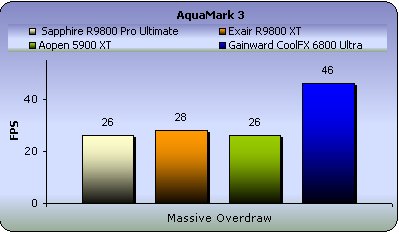
The 46 fps says a lot for the capabilities and the smooth performance
of the 6800 Ultra.
- Aquamark Triscore
The Aquamark Triscore comprises 3 values: the overall system performance,
the performance of the graphics system and the CPU performance. Keep
in mind that this is not the total result of the above tests, but the result
of the whole benchmark process including all 9 chapters.

This score is a sum of all chapters and not just the 3 minor
chapters examined. And as you can see, Gainward's CoolFX 6800 Ultra maintains
it's lead.
5. Codecreatures
Codecreatures
 Code
Creatures is a synthetic 3D benchmark that is a good reference for VGA
performance comparison. This is a high-end 3D benchmark that also requires
DirectX 8 copliant hardware, making it a good tool for measuring the
potential of DirectX 8 game performance.
Code
Creatures is a synthetic 3D benchmark that is a good reference for VGA
performance comparison. This is a high-end 3D benchmark that also requires
DirectX 8 copliant hardware, making it a good tool for measuring the
potential of DirectX 8 game performance.
The
Codecreatures benchmark is written with Microsoft's DirectX 8.1 API and incorporates
the use of Vertex and PixelShaders popular on next generation 3D accelerators.

The benchmark plays a photo-realistic nature scene and calculates
the performance of the graphics adapter by measuring the fps that it can
display at 1024x768, 1280x1024 and 1600x1200 resolutions. The score is a geometric
mean of those three resolutions called the Codecreatures number.
For
this Benchmark we offer the average FPS results of each card in the following
resolutions: 1024x768, 1280x1024 and 1600x1200.
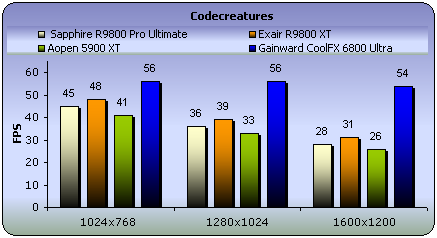
What we see here is proof that the latest generation VGA
chipsets need very fast CPU's. The same fps the 6800 Ultra achieved shows that
our test
system's CPU (P4 2.4) holds it back from performing up to it's true capabilities.
In the near future a new review with a faster CPU will be published analysing
this issue in detail.
- Codecreatures number
The codecreatures number is the resulting score of the total
benchmarking process.
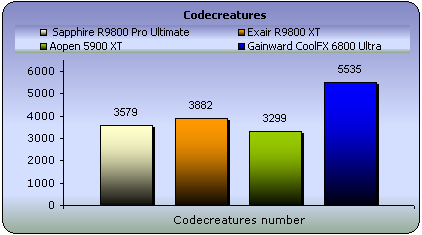
Gainward's Ultra 6800 is on top again. But
let's
see the
cards'
performance with GLExcess OpenGL benchmark.
6. GL Excess
GL Excess
 GL
Excess is a very good tool for measuring the performance of VGA cards with
OpenGL applications and games. This benchmark consists of 12 scenes grouped
in
4 categories (3 scenes in 1 category). Each category stresses different OpenGL
graphical sequences. The overall result named XSMark is the sum of the first
scene of each category. All scenes were run in the 1024x768 resolution at 32bit.
GL
Excess is a very good tool for measuring the performance of VGA cards with
OpenGL applications and games. This benchmark consists of 12 scenes grouped
in
4 categories (3 scenes in 1 category). Each category stresses different OpenGL
graphical sequences. The overall result named XSMark is the sum of the first
scene of each category. All scenes were run in the 1024x768 resolution at 32bit.
- Category 1

The first category includes scenes 1, 9 and 12. Nothing specific is
stressed on these scenes. Just average use of general OpenGL techniques.
The pic you see is from scene 12 and is made of three shifting
and rotating layers, which are textured in 4 blending modes. Nice effect!
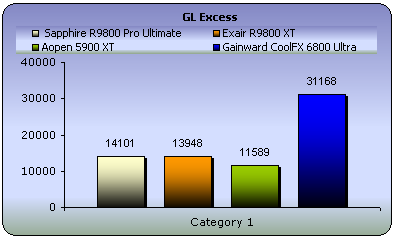
Three-fold performance for CoolFX 6800 Ultra.
- Category 2
 Scenes
3, 5 and 6 stress the card's 3D particle and polygon processing. Particles
are widely used in games and you see them for example when you fire with a
laser beam or when you light up a torch.
Scenes
3, 5 and 6 stress the card's 3D particle and polygon processing. Particles
are widely used in games and you see them for example when you fire with a
laser beam or when you light up a torch.
All 3 scenes are made with a particle system that stresses the card's polygon count and video memory. The spaceship you see in the picture is made of a very large number of polygons.

Again high count of OpenGL polygons were not a problem for Gainward's beast.
- Category 3

The third category made up of scenes 4, 10 and 11 render
the blending ability of the card. Blending is the mixture of the graphic layers
that result in complicated textures and effects.
The fill rate of each card is also stressed in these scenes.
So this test should be a reference on the quality of each card.

Here, the 6.4 Gpixels/sec pixel fill
rate of the 6800 Ultra performed this test with a rather expected score.
- Category 4
 Scenes 2 and 7 that constitute this category have to do with multitexturing effects. Multitexturing is the process of applying two or more textures to a single polygon or pixel, in order to provide spectacular images.
Scenes 2 and 7 that constitute this category have to do with multitexturing effects. Multitexturing is the process of applying two or more textures to a single polygon or pixel, in order to provide spectacular images.
Scene 8 uses a sphere map that is mixed to a simple texturing
technique in order to give reflection effects. For your info, the
reflection and shadow effects you see in games are accumulated in the
stencil
buffer.
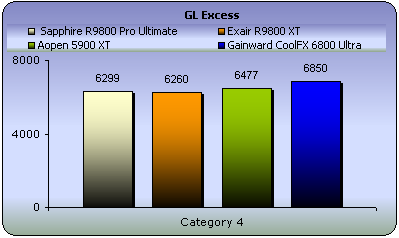
A higher score was expected for the high-toned 6800 Ultra.
XS Marks
The XS Marks is the score awarded by the GL Excess benchmark.
Keep in mind that this score doesn't sum up the results of all 12 scenes,
but sums up the score for each category's first scene. The XSMarks you get
with your card can be posted on the GL
Excess web site to compare it with other scores.

The overall performance of the 6800 Ultra shows that there
is no comparison with previous generation VGA cards.
Till now the synthetic benchmarks indicated that Gainward's CoolFX 6800 Ultra is at least 2 times better than the other cards. Now let's see if the situation changes with our game benchmark suite.
7. Farcry v1.2
Farcry v1.2
 You are Jack Carver running your own boat charter business in beautiful Micronesia. With a past best left behind you, you'll be focusing on your present assignment: escorting an ambitious journalist named Valerie Cortez to the Island of Cabatu. It seems like a piece of cake, but you'll soon learn: paradise can be hell.
You are Jack Carver running your own boat charter business in beautiful Micronesia. With a past best left behind you, you'll be focusing on your present assignment: escorting an ambitious journalist named Valerie Cortez to the Island of Cabatu. It seems like a piece of cake, but you'll soon learn: paradise can be hell.
Farcry is an awesome First Person Shooter (FPS) based on a last generation
3D engine named CryEngine. Real-time editing, bump-mapping, static lights,
network system, integrated physics system, shaders, shadows and a dynamic music
system are just some of the state of-the-art features that CryEngine offers.
A great advantage and strong point of CryEngine is its physics system which
supports character inverse kinematics, vehicles, rigid bodies, liquid, rag
doll, cloth and body effects. All physics seem to be very realistic and you
never get bored when facing enemies, since character models have multiple animations
that blend in realistic ways.
With an integrated shader system and a massive terrain which maximizes the
view distance to 2km, these features make Farcry a perfect action game and
also a refferable benchmark to speak of.
- Benchmark Settings
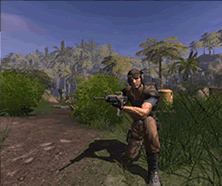
I recorded my own demo with Farcry for benchmark purposes. For the
demo I picked the Fort map and based the character on the top of the mountain
where the whole island can been viewed at an unbelievable distance of about
2 kilometers. It's truly a stressful benchmark for VGA cards since we used
the high quality settings for all tests. I was careful not to use many
bots because the advanced AI system of the game consumes a lot of CPU
power.
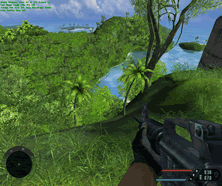 The latest patch (1.2) was used for our tests which updates the game's graphics engine to use the Shader model 3.0. Unfortunately this is supported for the 6800 series only.
The latest patch (1.2) was used for our tests which updates the game's graphics engine to use the Shader model 3.0. Unfortunately this is supported for the 6800 series only.
The resolutions we ran the demo at are as follows: 1024x768, 1280x1024 and
1600x1200. The first test was executed with Anti Aliasing (AA) and Anisotropic
Filtering (AF) features off. In the second test we leveled up AA at 4x and AF
at 8x. Keep in mind that this test is the most stressful of our whole game benchmarks
series.
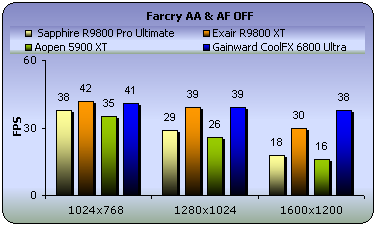
The low CPU issue shows itself here. As you can see, for
the first 2 resolutions we have the same fps for the 6800 Ultra and
the Radeon 9800. This of course is quite misguiding as it is due to the CPU
that holds the card back. It's like driving a Hayabusa
motorbike in a traffic jam.
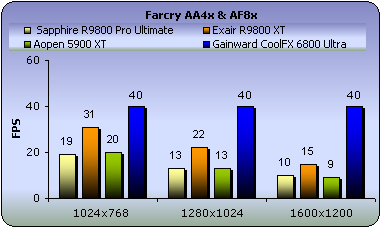
Enabling the quality settings, things start to clear out. Even though the
performance difference from the other cards is clearly visible, the fact
that the same 40 fps is achieved at all resolutions shows that the card
again is being held
back.
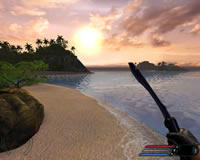
8. Painkiller v1.3
Painkiller v1.3
 You play as Daniel Garner, a seemingly regular guy who has just been killed in a horrific car accident. Trapped in a dark and un welcoming world between heaven and hell, you struggle to uncover the reasons why you've been denied entry into heaven. Awaiting your purification, you must fight through an endless number of demon soldiers as you attempt to stop an imminent unholy war.
You play as Daniel Garner, a seemingly regular guy who has just been killed in a horrific car accident. Trapped in a dark and un welcoming world between heaven and hell, you struggle to uncover the reasons why you've been denied entry into heaven. Awaiting your purification, you must fight through an endless number of demon soldiers as you attempt to stop an imminent unholy war.
If I was told to describe the game in a few words, I would just say "action
in all its magnificence". Painkiller is a FPS, but totally different
from others of its kind like Farcry. In Painkiller you don't have to
use any stealth or tactical abilities. You only shoot and run. An interesting
feature of the game is that you will always be outnumbered and surrounded
by hordes of enemies. Definitely a pure action game.

Painkiller's 3D engine, named PAIN Engine, puts out an unbelievably high polygon count, while adding increased texture quality and the latest lighting and shadowing techniques, including soft shadows, DOT3 bump mapping, water reflections, glass simulation, volumetric light and fog, and more.
The game features 24 single-player levels, each one made up of an average
350,000 polygons. The game boss monsters are massive, made up of 8000+ polygons
and
2x2048x2048
textures. Enemies also have advanced bump-mapping and lighting models including
specular lighting.
- Benchmarking Settings
To test Gainward's CoolFX 6800 Ultra with Painkiller, I
recorded a time demo on the Psycho deathmatch map. I picked a multiplayer
stage since this was the only way to record a time demo. The timedemo has
only 2 players fighting each other so the fps are high. After recording the
demo, I grabbed the average FPS at the following resolutions: 1024x768,
1280x1024 and 1600x1200. The first test was executed with Anti Aliasing
(AA) and Anisotropic
Filtering (AF) features off. In the second test, I upped the level for AA
to 4x and AF to 8x.
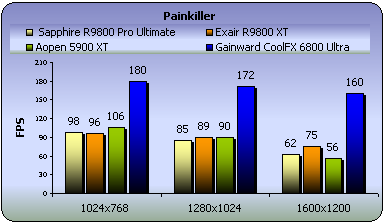

Double performance for 6800 Ultra even with AA and AF Quality settings on.
9. Hitman: Contracts

Agent 47 is holed up in a hotel somewhere in Paris. He has been shot and is heavily doped up on painkillers. He's in a ghastly state and is both hallucinating and suffering from nightmarish flashbacks. This is where the missions in Hitman: Contracts come into play, as each one is designed to be a flashback to a previous hit from 47's past.
Every mission in the game use a structure that's similar to those in past Hitman games, thus giving you multiple objectives and multiple ways to achieve them. At his disposal, 47 has more than 30 firearms and a host of new melee weapons and attacks, including new sneak attacks for stealth killing.
To be honest, I expected more from the 3rd revision of this game.
Even though I really enjoyed Hitman 1, I found boring and awkward the next
2 sequels.
But Hitman: Contracts differentiates from the previous games for its awesome
graphics. You have to play this game to see what I mean. I was staring in awe
those fabulous weather effects. I haven't seen anything like it in any
other game.
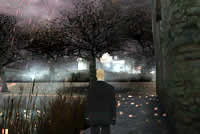
But the real reason I included Hitman: Contracts in our benchmark
suite is it's very demanding post filtering quality setting. This
game uses a unique post filtering system with complicated bluring effects.
And
as you
can see for yourselves, it really extends even the latest GPUs, making
it a very good benchmark.
- Benchmarking Settings
Unfortunately, the game doesn't have a decent benchmark process or a demo recording
capability. Thus, I played manually a part of a stage that I found suitable.
The stage is named "Beldingford Manor" and it has very spectacular
rain effects. For the sake of VGA benchmarking, Agent 47 storms at a Scottish
manor eliminating whatever gets in his way.
Firstly, I played the stage at 1024x768, 1280x1024 and 1600x1200 resolutions
without having the quality settings (post filtering, anisotropic) enabled. I
again played the same stage doing the same thing, but this time with Anisotropic
and High Post filtering enabled.
Now let's see if Gainward's CoolFX 6800 Ultra will pass this test ...
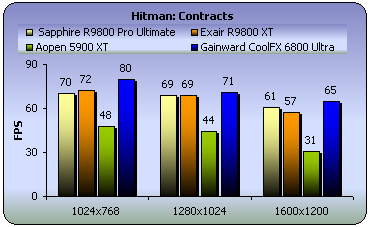
Interesting results. It seems that ATI chipsets are good at
this game. But let's see what happens when Post Filtering was enabled.
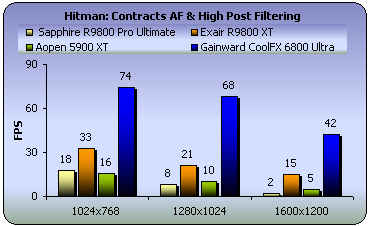
It's pretty amazing how this game's Post Filtering technique
manages to break down the performance of the most powerful VGA chipsets. But
it seems that for CoolFX 6800 Ultra it is no problem to render. It is worth
noting though that it dropped its fps down to 42 when at the 1600x1200 resolution
with the very demanding Post Filtering on.

Agent 47 at work
10. X2: The Threat
X2: The Threat
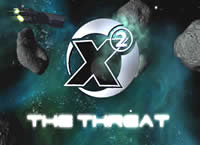
Trade your way through the space lanes and achieve mogul status.
Fight your way through dozens of interlinked missions within an all-new storyline.
Build your empire of stations and ships across the Universe.
Think if your next move could be your last as the Universe reacts to your actions.
A first person space experience designed for today's game players with sound and graphics to match.
Discover new worlds and races, become a trader, bounty hunter, pirate, miner or a cunning combination of them all.
The uneasy peace that befalls the Universe is about to be broken...
Can you meet the Threat head on?
Yes, this game is as good as it sounds. If you enjoyed freelancer
then you will fall in love with X2: The Threat. Apart from it's vast universe
environment, perfectly suitable for countless space explorations, this game
also includes a very remarkable 3D engine. Also, it's full support of Antiliasing
and Anisotropic filtering settings makes it a good reference for testing the
capabilities of the latest generation VGA cards.
For our tests I used a benchmark of X2 that I found on the net and believe
me, it is very demanding even for the high-end chipsets currently available.
But, let's see if it will be a challenge for Gainward's CoolFX 6800 Ultra.


Yep. An other match point for CoolFX 6800 Ultra.
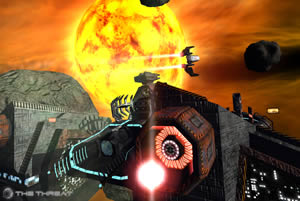
11. Unreal Tournament 2004
Unreal Tournament 2004
Unreal Tournament 2004 is a multiplayer first person shooter that combines the kill-or-be-killed experience of gladiatorial combat with cutting-edge technology.
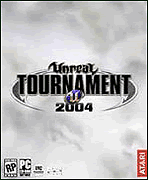 Ten game modes - both team-based and "every man for himself" -- provide even the most hardcore gamer with palm-sweating challenges through unbelievably detailed indoor arenas and vast outdoor environments.
Ten game modes - both team-based and "every man for himself" -- provide even the most hardcore gamer with palm-sweating challenges through unbelievably detailed indoor arenas and vast outdoor environments.
As the ultimate techno-gladiator of the future, players will take their fates into their hands, battling against up to 32 other players online in action-packed, frag-filled arenas
- Unreal Tournament 2004 Benchmark
 Many
new features and maps are available in Unreal T. 2004. Also, the gameplay
has changed in many of its game types. For example, there is the Onslaught
game type where you have to take over the enemy base using warmachines and
vehicles in a massive map. For this reason, we included an Onslaugh and a
Capture The Flag (CTF) map.
Many
new features and maps are available in Unreal T. 2004. Also, the gameplay
has changed in many of its game types. For example, there is the Onslaught
game type where you have to take over the enemy base using warmachines and
vehicles in a massive map. For this reason, we included an Onslaugh and a
Capture The Flag (CTF) map.
As with the other games, we conducted the benchmark using
our timedemos at the 1024x768, 1280x1024 and 1600x1200 resolutions. All
tests were done with the maximum detail settings selected. 2 bots were used
on
the Ons-Torlan map and 8 bots on the CTF-Bridge of Fate map. First let's
see the Onslaught game type test on the Torlan map.
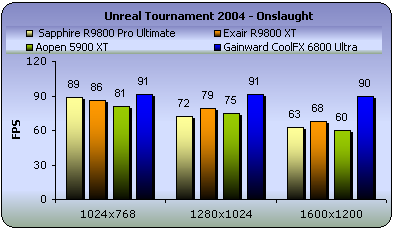
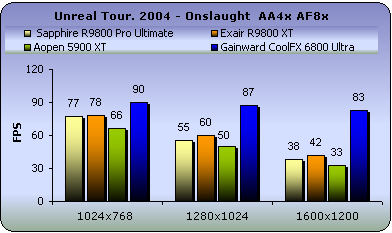
Except from the Onslaught game type, unreal T. 2004 also has the following game types: Assault, Deathmatch, Capture the Flag, Team Deathmatch, Double Domination, Bombing Run, Mutant, Invasion and Last Man Standing. We also used a Capture the Flag timedemo with the same high quality settings.
CTF is our favorite, so we couldn't resist including
a CTF timedemo in our benchmark suite. The CTF map we picked is the Bridge
of Fate with 8 bots.


What we should note here is the unbelievable 125 fps
returned at the 1600x1200 resolution. This also shows that when enabling
AA and AF
settings, the VGA card carries the weight, taking on the most calculations
and minimizing CPU usage. This may be the process strategy of the NV40
GPU.
12. Unreal Tournament 2003
Unreal Tournament 2003
 In
the latest Unreal Tournament series, the player models contain a very high
polygonal count. They are extremely detailed from the head to toe and
they all look totally different from all the other players. The character animations
are the most impressive. From running, jumping, and all the death animations.
In
the latest Unreal Tournament series, the player models contain a very high
polygonal count. They are extremely detailed from the head to toe and
they all look totally different from all the other players. The character animations
are the most impressive. From running, jumping, and all the death animations.
Thanks to the new karma psychics system, every death is handled
in a different way that corresponds to the surrounding environment. If players
are shot with a rocket, they will be on fire, or if they die and are on the
edge of a cliff, they will roll down according to the of the cliff-face terrain.
- Unreal Tournament 2003 Benchmark
To test Unreal T. 2003 we used the death-match map dm-antalus
with 5 bots. Below you can see the average fps results with the same resolutions
and quality settings as used in UT 2004.
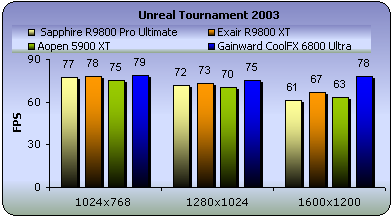
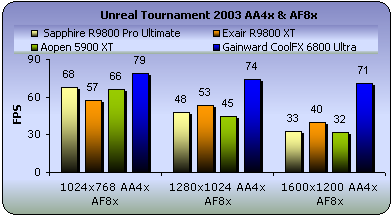
No matter how many times I ran the same benchmark with the
same settings, the 6800 Ultra kept returning the same, unacceptable for its
kind, fps count. Of course, this has nothing to do with the performance of
the card but rather it is again the the CPU issue.
13. Halo
HALO
 Halo is a sci-fi shooter that takes place on a mysterious alien ring-world. Packed with combat, Halo will have you battling on foot, and in vehicles, inside and outdoors with Alien and Human weaponry. Your objective: to uncover Halo’s horrible secrets and destroy mankind’s sworn enemy, the Covenant.
Halo is a sci-fi shooter that takes place on a mysterious alien ring-world. Packed with combat, Halo will have you battling on foot, and in vehicles, inside and outdoors with Alien and Human weaponry. Your objective: to uncover Halo’s horrible secrets and destroy mankind’s sworn enemy, the Covenant.
The game supports the latest shader technology of pixel shaders 2.0. Of course the graphics are somewhat better on PC than Xbox, since most of the game's shader effects have been redesigned to support the latest 2.0 shaders in DX9. Having in mind that there are few games supporting 2.0 pixel shaders, Halo is a good test for VGA cards performance on the shader technology.
A prominent disadvantage of the game is its lack of Anti
Aliasing and Anisotropic Filtering support. If you get the funny idea to enable
these settings via the control panel of your card, you will experience no difference
in graphics quality as well as a slow down and loss in performance.
Halo also supports pixel shaders 1.1 that offer better performance
at a cost in quality.
 - Halo Benchmark
- Halo Benchmark
For the Halo benchmark I set the default settings with pixel
shaders 2.0 at the following resolutions: 1024x768, 1280x1024 and the awesome
1600x1200. The -timedemo command was used to run the default benchmark.

In Halo too, the CPU limitation issue appears again.With
a CPU at 3.2 GHz, I believe the fps of the 6800 Ultra might reach 100 fps,
having in mind that Nvidia's GPUs are made for performing better on shaders.
14. Tomb Raider : Angel of Darkness
Tomb Raider : Angel of Darkness
 A series of grisly murders brings Lara into conflict with a sinister Alchemist from the past, and a secret alliance of powerful individuals shrouded in mystery. Accused of the murder of her one time mentor, Werner Von Croy, Lara becomes a fugitive on the run. Pursued by the police, she follows the Alchemist into a dark world of blood, betrayal and vengeance where it is up to her to defeat this unholy alliance, and stop them from unleashing their incredible powers on the world.
A series of grisly murders brings Lara into conflict with a sinister Alchemist from the past, and a secret alliance of powerful individuals shrouded in mystery. Accused of the murder of her one time mentor, Werner Von Croy, Lara becomes a fugitive on the run. Pursued by the police, she follows the Alchemist into a dark world of blood, betrayal and vengeance where it is up to her to defeat this unholy alliance, and stop them from unleashing their incredible powers on the world.
Angel of Darkness employs a brand new engine with Lara now made up of over 5,000 polygons as opposed to just 500 in previous Tomb Raider games. The range of special effects create a batch of cool visuals.
From the many kinds of water (mercurial liquid forms, good
surface texturing, and realistic pools of water) to fire (heat blurs and colorful
fiery pits), to the game's many light effects (lots of shadowing, multiple
light sources and effective reflections), Core mixes more realistic settings
with special effects to create a well-rounded whole. It is worth mentioning
though that Tomb Raider: AOD uses pixel shader 2.0 technology at a higher
extent than Halo does.
- Tomb Raider:AOD Benchmark
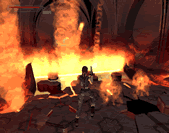 I
recorded a timedemo on the Paris stage. The particular scene where the timedemo
was recorded, is full of complicated fire effects. This benchmark stresses
a lot of the cards' pixel shading process and we believe that this is the ultimate
pixel shader 2.0 game benchmark.
I
recorded a timedemo on the Paris stage. The particular scene where the timedemo
was recorded, is full of complicated fire effects. This benchmark stresses
a lot of the cards' pixel shading process and we believe that this is the ultimate
pixel shader 2.0 game benchmark.
I grabbed the fps from the timedemo twice. Once with the Anti Aliasing and
Anisotropic Filtering off (Trillinear was used instead), and once more with
AA at 4x and
Anisotropic Filtering mode enabled from the game's settings console .

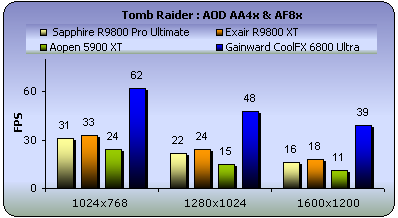
The raw power of the NV40 core shows itself mostly at the
1600x1200 resolution, where it returned the incredible for the particular benchmark,
39 fps.
It seems that there is no match for Gainward's CoolFX 6800
Ultra from among the previous generation's best VGA cards.
15. Farcry Quality
Farcry Quality
We have seen enough regarding the performance of the CoolFX 6800 Ultra.
Now let's exmine it's performance quality. Firstly, you will see
some screenshots captured
that indicate the anisotropic filtering quality the 6800 Ultra has.

These are the 6800 Ultra Anisotropic filtering levels. The NV40 GPU gives the ability to render textures up to 16x anisotropy.
- Farcry AF Quality Test
To test the anisotropic filtering quality of the 6800U, I
picked 2 particular scenes in Farcry and I grabbed screenshots from specific
scenes with different values of AF.
The scene you see below can be found at the Volcano campaign level. You can enlarge the image by clicking on it.
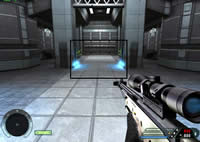
CoolFX 6800 Ultra supports the following AF settings: 2x, 4x, 8x and 16x. Now let's see the quality difference on this scene at the 1024 x768 resolution.
 |
AA OFF |
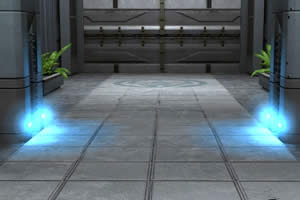 |
AA 2x |
 |
AA 4x |
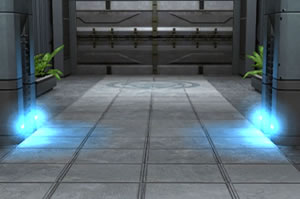 |
AA 8x |
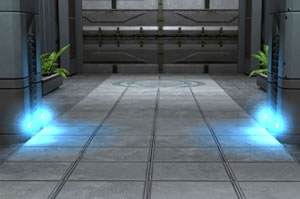 |
AA 16x |
With AF disabled the poorer quality is very visible in Farcry
with the 6800 Ultra. Only after the 8x anisotropy level can you experience
some quality graphics. It is worth noting that a slight quality difference
is visible between 8x and 16x (observe the middle line of the floor when it
meets the circle at the end of the hallway).
I also picked a scene from a rusty bridge. The scene can be
found at the Bunker campaign level. I picked this one because the anisotropy
level is very visible on the floor of the bridge.

Again I grabbed screenshots using all AF settings CooLFX 6800U
supports at the 1024x768 resolution.
The bridge looks pretty ugly even with the 2x anisotropy level. Things start to to look better mainly at 4x and more. But if you see carefully the 4x and 8x pictures at the end of the bridge floor, you may notice that the 8x has cleared out the slight blur found at 4x.
Comparing these images with the performance of the 6800 Ultra, I recommend
enabling AF at 8x. The good point of this card is that you will not face any
major drops of fps when enabling it's quality settings.
16. Painkiller Quality
- Painkiller AF quality test
I used Painkiller to check not only the anisotropic capabilities
of the 6800 Ultra, but also the Anti-Aliasing rendering quality. First let's
see some pics I captured to again check the anisotropy.
On Painkiller, there is a nice spot where you can see the difference between
the different Anisotropic settings. On the DM_Psycho map, there is a hall
with
bloody footsteps
on the floor. I believe this spot is a perfect reference to test any VGA
card's texture quality. Clean your glasses and observe carefully :)

 |
 |
AF OFF |
2x AF |
 |
 |
4x AF |
8x AF |
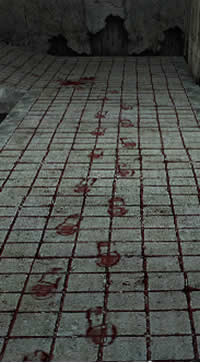 |
16x AF |
The footsteps at the end of the hallway start to clear out at the 4x anisotropy
level. Here again there is a slightly better quality at 8x and you can hardly
see it on the marbles at the end of the hallway. I can't see any difference
at all between the 8x and 16x level. Keep in mind though that games use Anisotropic
Filtering in different ways. Also, some games do not even support 16x AF.
Enough with the Anisotropic Filtering. I hope the owners
of the 6800 Ultra can make up their minds up on what
anisotropy level to use. Now regarding the Anti-Aliasing quality all Nvidia's
6800 Ultras,
use
the following
AA levels:

I grabbed some screenshots from Painkiller and Unreal Tournament
2004 to check the differences between the above AA levels.
- Painkiller AA quality test
To test Gainward's CoolFX 6800 Ultra Anti-Aliasing technique,
I picked a scene which includes many edged textures. This scene can be
found on the
DM_Cursed multiplayer stage. On the following picture, you can see the
area I used for the AA test. You can enlarge the image by clicking on it.

 |
AF OFF |
 |
2x AF |
 |
2xQ |
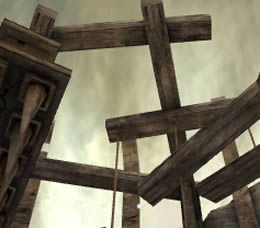 |
4x AF |
As you can see, the scale effect has been totally smoothed out even at 4x.
There is no visible difference between 4x and 8xS.
17. Unreal Tournament 2004 Quality
Unreal Tournament 2004 Quality
- Unreal Tournament 2004 AA quality test
I also picked a scene from Unreal Tournament 2004 to check the card's Anti-Aliasing rendering ability. The scene can be found on the ONS_Antalus map on the powercore's base.

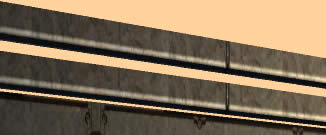 |
2x AA |
 |
2xQ AA |
 |
4x AA |
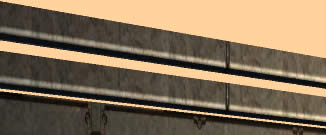 |
8xS AA |
On Unreal 2004, the stair effect has been totally swept
away even at the 2x AA level. Maybe it's time to remove Unreal 2004 as a quality
reference, since there are other games that use all the AA levels of the high-end
VGA cards.
18. Overclocking Capabilities
Overclocking Capabilities
I'm pretty amazed by the total performance and quality the CoolFX 6800 Ultra
offers. But as you all know, all cards hide some more power underneath. This
extra power can be released through the overclocking procedure.
Gainward's 6800 Ultra is accompanied by a very nice and easy-to-use tweaking
software application named EXPERTool. Below you can see the menu from EXPERTool
that rolls up when right clicking it's icon on the taskbar.
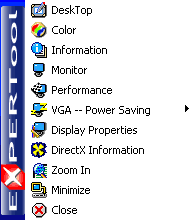
When I first installed the card and clicked on the performance button the following window appeared indicating the default core and memory clock speeds.
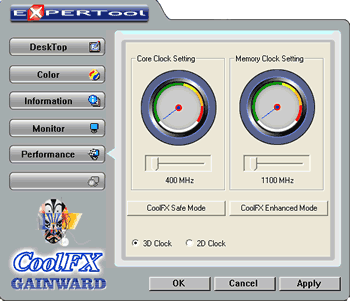
Selecting the CoolFX Enhanced Mode, the clock speeds reach
the limit of 450 and 1200MHz for core and memory respectively. And believe
it or not, this is the normal state Gainward's CoolFX 6800 Ultra operaties
in. We haven't even overclocked it yet! The CoolFX Enhanced mode was the state
I
run all the benchmarks.

With trembling hands for the first time in my life, I pushed
a VGA card over the 450 and 1200 boundaries. But unfortunately I only managed
to overclock the card at 455MHz for it's core and 1250 for the memory.
When I tried to set the core clock speed to 450 MHz, the PC restarted before
3Dmark
managed to finish. It seems that if the GPU surpasses a particular temperature,
then it restarts the computer. 455 MHz is the maximum core speed I achieved.
As for the memory clock, some artifacts were still visible at 1260MHz.
Maybe there will be a better chance to overclock this card with a Thermaltake
case.
But I say "maybe" because the cooling method of Gainward's CoolFX 6800
Ultra is internal water-cooling which means that there won't be a big difference
in temperature no matter how many fans you use.

I used some games to test the new overclocking values achieved,
but the results did not indicate any worthwhile boost in fps. So it
would be futile to make any chart indicating 2 or 3 fps difference.
19. Conclusion
Conclusion
If you buy this card, you will be the King of graphics,
you will be able to play ANY game in ANY resolution and with ANY quality
setting, you will be the soul of any LAN-party, you will be rightfully boasting
that you have the best VGA card ever, everybody will admire and respect you,
you will be the center of attention of both your social and online environment
and everybody will stare at you in awe when you start talking, BUT
... you will be about €700 poorer.
Well, if you eat lobster with caviar for breakfast and your
biggest dilemma is whether to buy a Ferrari F50 or a Lamborghini
Diablo, then this VGA card is made for you.
Seriously though, Gainward's CoolFX
6800 Ultra is a performance beast and is no match for the last
generation VGA cards. In the future*, you will be able to see some other
reviews with ATI's and Nvidia's latest chipsets, but till then Gainward's
CoolFX 6800 Ultra justifiably can possess CDRinfo's BEST PERFORMANCE VGA
SAMPLE.
Even with the low CPU performance issue that held the card's
performance back a little, Gainward's CoolFX 6800 Ultra managed to make clear
it's pressence taking the lead in all benchmarks and tests.
Another great advantage of the card is it's absolute silence.
Honestly, when I first saw the pump, I thought that it will tear my ears
away but I was left startled since neither the pump nor the radiator
made
any irritating noise. As I already mentioned at the start, to achieve this
you must attach the pump and the fan to the case with the screws shipped
with the package. This advantage makes it the perfect VGA card for movie
lovers.
The only major drawback is it's price which is very high
even for such a good performing product. It seems that the Innovatek water
cooling system makes the difference with this card, but don't forget that
there are other cooling methods too, enabling overclocking at the clock speeds
Gainward's CoolFX 6800 Ultra is set.
But to be fair, I don't think that any other water cooling
system will be as good as Innovatek's. This is because water cooling technology
is at the primitive stage now, but only Innovatek has made it's stand offering
a trustworthy system. So, if someday I have the funny idea to "fill" my
PC with water, I would choose Innovatek's water cooling system. That's for
sure.
*19/08/2004 Review Updated. Read more tests Here

